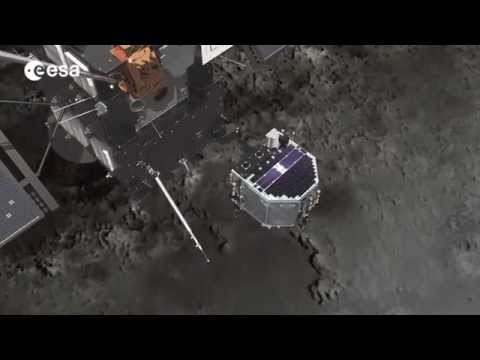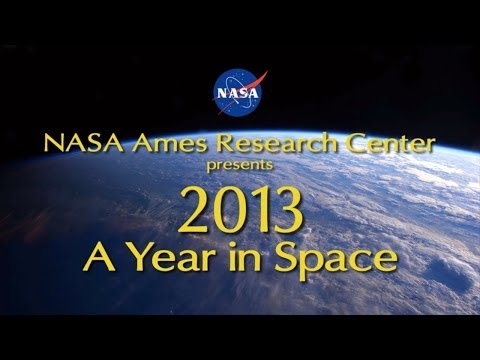The Coolest Missions from India’s Space Program
When you think of space exploration, NASAor the European Space Agency probably leap to mind. But a lot of incredible missions come fromother parts of the world, too. Like, Japan’s JAXA returned the first samplesfrom an asteroid, and Russia’s Roscosmoshas a flawless record delivering astronautsto the International Space Station. One country you may not have thought of isIndia, but the Indian Space Research Organisation,or ISRO, is on its way to becoming a leaderin space exploration — and they’re just getting started. When it comes to launching spacecraft, ISROhas a great track record. Back in February, they made global headlineswhen a single Indian rocket launched 104 satellites— a new record. Most were shoebox-sized cubesats, but therocket successfully put them all on the rightpaths, one every few seconds — all whiletraveling at more than 27,000 kilometers per hour!Thanks to their growing reputation, thesesatellites came from all over the world, includingthe U. S. , Switzerland, Israel, and Kazakhstan. In 2008, ISRO also sent their first spacecraftto the Moon, where it did some basic scienceand proved their technology worked. But they truly arrived on the world spacescene in 2014, when their Mars Orbiter Missionentered orbit around — you guessed it! — Mars. That put them in a tiny club of interplanetarynations alongside Russia, the U. S. , and theEuropean Union. And on top of that, ISRO were the only onesto get into Mars orbit successfully on their first try!That by itself is a real accomplishment, butISRO also had big plans to collaborate withNASA’s MAVEN spacecraft. MAVEN showed up at Mars at about the sametime, and both orbiters were tasked with studyingthe thin Martian atmosphere. While MAVEN’s orbit was designed to skimnear the planet, the orbit for the ISRO missioncould take the spacecraft more than 500 timesfarther away, allowing researchers to piecetogether a complete view of the atmosphere. The Mars Orbiter Mission even contained akey piece of technology NASA’s satellitedidn’t have: a methane detector. Here on Earth, methane is primarily createdfrom life — like farting and burping cows— and with ISRO’s methane detector, researchershoped to map the global distribution of thegas all around Mars. At least, that was the plan. Unfortunately, because just getting to Marsis such a challenge, ISRO considered the wholemission a so-called “technology demonstration”. So most of their efforts went into thingslike interplanetary communication… not scientific instruments. Some of their equipment worked great, butthings probably didn’t turn out so wellfor the methane detector. As of 2016, the mission hadn’t found anymethane in the Martian atmosphere. But since other missions, like Curiosity,have found trace amounts of it, that couldmean the ISRO orbiter just wasn’t sensitiveenough, or that there was another issue. Now, ISRO is developing a much more capableMartian satellite, so they could learn a lotmore in the 2020s. And the ESA and Roscosmos’s Trace Gas Orbiterwill be investigating the methane situationin the meantime. Still, ISRO’s first Mars mission was a successin a lot of way, and the organization is nowready for even more exploration. And until then, they’re also making majorcontributions to astronomy, with a space telescopecalled AstroSat that launched in 2015. You can think of AstroSat kind of like a mash-upof NASA’s Hubble Space Telescope and ChandraX-Ray Observatory. It’s way smaller than either of those, butcan still accomplish something really cool:observing a single astronomical source ina whole bunch of wavelengths at once!“Astronomical source” is just fancy science-talkfor something in space that emits, well, anything. In this case, AstroSat can find somethingwe see in the sky and study it in visible,ultraviolet, and X-ray light — all at thesame time!To do something like that with Hubble andChandra would require tons of coordination,but AstroSat makes it happen for everythingit looks at. And earlier this year it contributed behindthe scenes to a story you probably heard a lot about. This June, LIGO detected gravitational waves,or ripples in space-time caused by mergingblack holes, for only the third time. And a day after they detected them, an observatoryin Hawaii saw a flash in the very same partof the sky. At first, scientists thought this flash wasprobably the afterglow of the merging blackholes — but it wasn’t. Follow-up observations from AstroSat helpeddetermine that a distant gamma ray burst — probablyfrom a supernova — had just happened toappear in the same part of the sky at almostthe exact same time. Talk about astronomical odds, am I right?Without AstroSat, it probably would have beena lot harder to figure out what that flash was. Squishing two space telescopes into one isjust one example of how ISRO puts its ownunique twist on space exploration, and they’renot slowing down anytime soon. In addition to their planned Mars mission,ISRO is getting ready to land on the Moon,and is working on missions to explore Venus,the Sun, and even Jupiter. It’s an ambitious plan, but they’re offto a great start and, when it comes to exploringspace, it’s always the more, the merrier!Thanks for watching this episode of SciShowSpace, and special thanks to our patrons onPatreon for making it happen!If you’d like to support the show, you cango to patreon. com/scishow.













